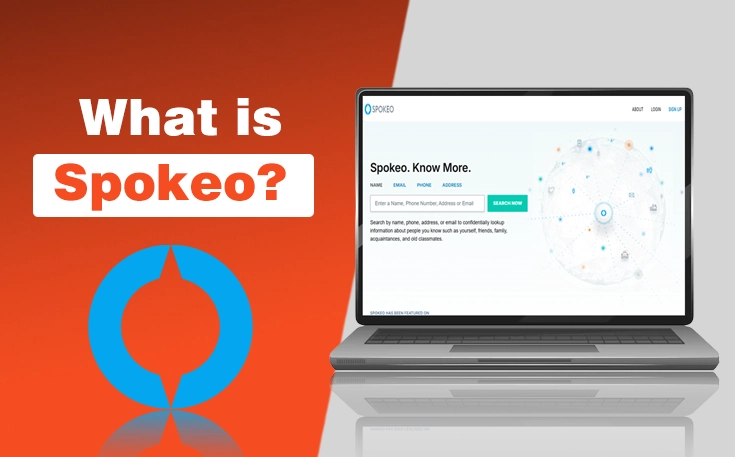While social media marketing increases brand visibility and powers sales and relationship building, many brands fail to harness their full potential consistently. Why?
Many brands put little effort into social media marketing analysis or ignore it. They create a social media marketing campaign, run it, and only care about the campaign’s performance numbers.
When it’s time to create the next campaign, they care less about how the initial campaign’s performance is likely to affect the new campaign. This leads to poor brand positioning, resource wastage, and missed opportunities. If you are among the many, here is how to join the winning team. Come along!
In this blog post, I will explain social media marketing analysis and how to create one.
Let’s start!
What is Social Media Marketing Analysis?
Simply put, social media marketing analysis is the process of collecting and breaking down data from various social media platforms like Instagram, LinkedIn, or X to facilitate decision making before creating a campaign or while running a campaign.
Besides collecting data from your brand’s social media accounts, you can obtain social media marketing data from third party providers. Such data includes comments, follower numbers, clicks, shares, and more.
Once you have the data, you analyze it to answer certain questions. For instance, how can your brand stay ahead of competitors, why did a certain outcome occur, or what is likely to happen next? And, since the steps to answering these questions are unique, I will end up with different types of social media marketing analysis.

Types of Social Media Marketing Analysis & Examples
Knowing the difference between these types of social media marketing analysis allows you to go beyond surface-level campaign performance analysis.
Rather than just knowing how many likes or comments a post has, or sales you made while running a campaign, you can understand why people engaged, what content to create next, and whether to refine or stop running a campaign.
Here are the five key types of analysis you should know. I’ve also included some examples:
1. Descriptive Analysis
Descriptive analysis is all about documenting the performance metrics across social media platforms. You create a social media marketing campaign, run it, and track key performance indicators (KPIs) like comments, shares, reach, impressions, or click-through rate.
While tracking, you document the changes in each KPI, yielding reports that simply compile or summarize the statistics. That’s it! You do not proceed to analyze the data to determine why a certain change occurred.
Even though you are just documenting, note that simply presenting the statistics using visual tools like graphs or charts can tell whether performance is improving or declining. With this insight, you can tell whether to keep investing in a campaign or to suspend the campaign temporarily.
2. Diagnostic Analysis
While diagnostic analysis simply tells what happened during a certain campaign, diagnostic analysis tells why a certain event occurred.
For example, you may post an article or video and it goes viral. In this case, descriptive analysis would inform you that there is an overwhelming spike in article reads or video views. Diagnostic analysis, on the other hand, investigates what caused that spike.
To understand why a spike in views or reads occurred, you can carry out a qualitative assessment like reviewing comments or a sentiment analysis using AI to determine the emotional tone behind audience comments or reactions.
After a diagnostic analysis, you get to know what is driving success or failure. You understand what works, allowing you to replicate it in the future.
3. Predictive Analysis
What if you could tell what content is likely to go viral or at what time you should post to get more engagement? This is possible through predictive analysis.
To proceed with a predictive analysis, you need to collect past social media marketing data that aligns with a specific objective. Then, use a predictive AI model to analyze the data.
The AI model can tell what content is more likely to perform better. It does this by studying certain patterns around past engagement levels, content performance, and user behavior.
Predictive analysis helps with proactively optimizing campaigns to stay ahead of trends and competitors. Rather than guessing what to post, you use data to plan ad spend, influencer partnerships, and fill content calendars confidently.
4. Prescriptive Analysis
While some people liken prescriptive analysis to predictive analysis, remember that prescriptive analysis not only helps with predicting but also suggests what actions to take while the campaign is running.
So, you are basically combining historical, diagnostic, and predictive data to generate automated action-oriented recommendations.
The AI models actively examine current campaign performance data, review past data, review past predictions, and recommend what to do next.
Prescriptive analysis is crucial, especially when you’ve built a brand in a constantly evolving industry like fashion. You may have a solid campaign in place only for a new trend to drive traffic from the platform you are running the campaign to another.
With prescriptive analysis AI models in place, it becomes easier to capture sudden changes. You know where to focus your social marketing efforts and how to adjust your strategies for maximum impact.
5. Competitive Analysis
Lastly, there’s competitive analysis to help with positioning your brand strategically.
To perform competitor analysis, you need to first of all know your competitors and the platforms on which they frequently post content. Then, you monitor engagement rates, follower growth, posting frequency, influencer collaboration, and other social media metrics.
The aim is to have a general understanding of what your competitor is doing better than you.
From examining competitor data, you can also understand why certain campaigns run by the competitors failed. This way, you know what to avoid or how to adjust messaging accordingly.
Moreover, you can uncover gaps while in the process of competitor analysis. For example, your competitor may not be aware of a certain social media platform that potential clients spend most of their time in. This presents the opportunity to dominate the space before competitors catch up.
How to Create a Social Media Marketing Analysis
Now that you understand what the five types of social media marketing analysis entail, you may be asking, ‘how do I create a social media marketing analysis?’
Here is a step-by-step guide to create a social media marketing analysis:
1. Define Clear Goals
Start by identifying what you want to achieve with your social media marketing strategy:
- Increase brand awareness
- Drive website traffic
- Boost engagement
- Generate leads or sales
Your goals will determine which metrics are most important.
2. Choose Key Metrics to Track
Select metrics that align with your goals. Common metrics include:
- Engagement rate (likes, comments, shares)
- Reach and impressions
- Follower growth
- Click-through rate (CTR)
- Conversion rate
- Sentiment analysis (positive vs. negative mentions)
3. Use Analytics Tools
Use platform-native tools and third-party software:
- Facebook Insights, Instagram Analytics, LinkedIn Analytics
- Google Analytics (for tracking traffic from social)
- Sprout Social, Hootsuite, Buffer, Semrush, Socialinsider
These tools help you collect data across platforms and visualize performance trends.
4. Collect and Organize Data
Create a spreadsheet or dashboard to log your metrics:
- Break down data by platform
- Track performance over time (weekly, monthly, quarterly)
- Include benchmarks and comparisons
This makes it easier to spot patterns and anomalies.
5. Analyze Performance Trends
Look for insights such as:
- Which content types perform best (videos, carousels, memes)
- What posting times yield the highest engagement
- Which platforms drive the most traffic or conversions
- How audience demographics affect performance
Use this analysis to identify strengths and weaknesses.
6. Evaluate Audience Behavior
Dive into audience analytics:
- Age, gender, location
- Interests and online habits
- Sentiment and feedback
This helps tailor your content and targeting strategies.
7. Conduct Competitor Analysis
Benchmark your performance against competitors:
- What kind of content are they posting?
- How often do they post?
- What’s their engagement rate?
Tools like Sprout Social and Socialinsider can help you track competitor metrics and spot opportunities.
8. Create Actionable Reports
Summarize your findings in a clear, visual format:
- Use charts and graphs to show trends
- Highlight wins and areas for improvement
- Include recommendations for future campaigns
Reports should be easy to share with stakeholders or team members.
Final Words
Social marketing boosts brand awareness, offers real-time customer feedback, enhances customer engagement, and increases sales. However, many brands miss out on these benefits because they ignore social media marketing analysis. This guide breaks down social media marketing analysis, showing you how to use data to stay ahead of the curve.
Need custom app with amazing features?
Get a Quote




